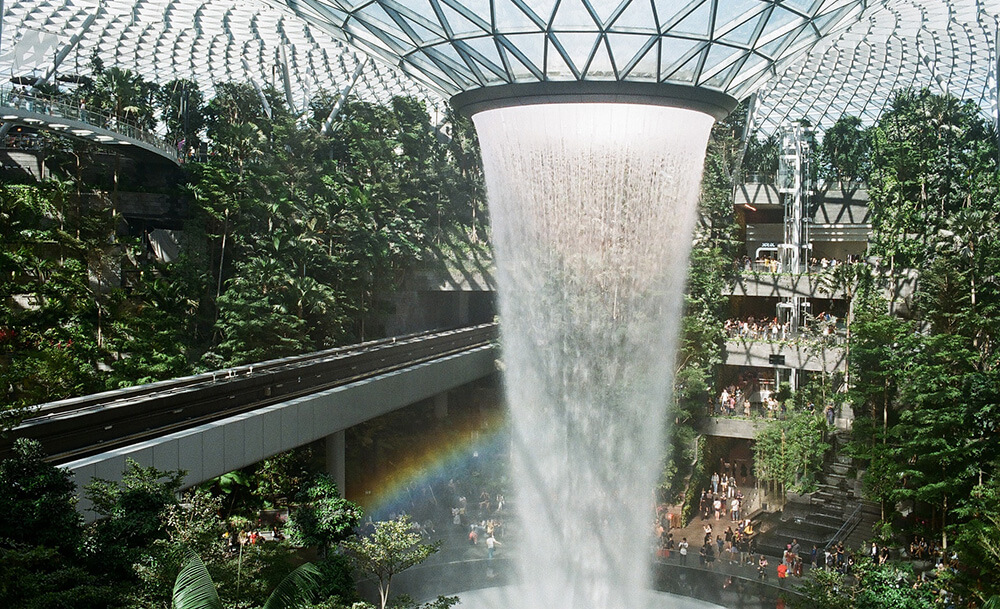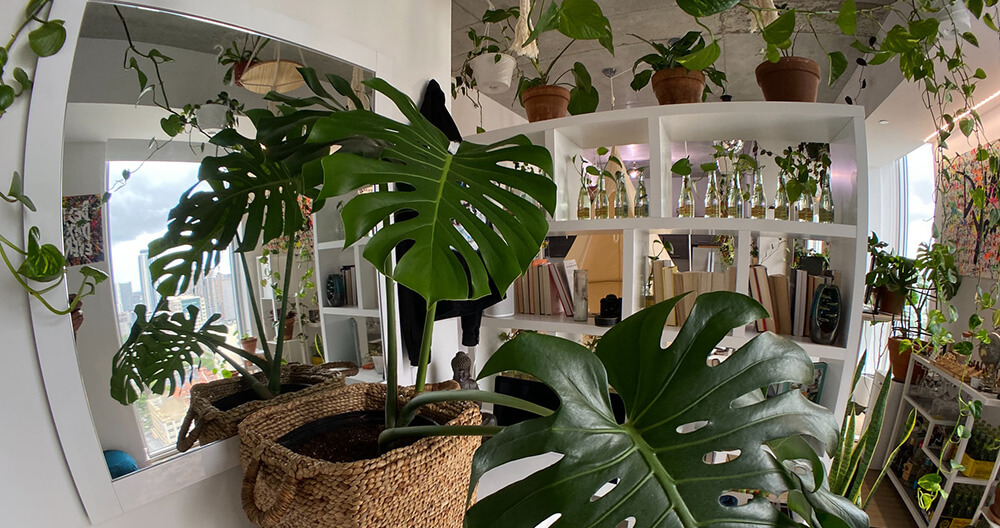
Biophilic Interior Design - A Love Of Nature
The word 'biophilia' means love of nature, and this word broadly sums up what biophilic design is about.
Biophilic design is focused on making the most of human beings' attraction to nature by bringing it into interior projects. We all have a genetic connection to trees, hills, flowers, bushes and all sorts of greenery which dates back thousands of years through the history of our former agrarian selves. The sights, smells and sounds of nature offers a calming presence. It helps to bring relaxation and peace, no matter how fast paced life can become.
Where Did It Start?
First made popular in the 1980's by American biologist Edward O. Wilson, biophilic design came about when people were trying to figure out how best to alleviate the pressures of urbanisation on individuals' and communities' well-being.
Urbanisation has, of course, not slowed down since then. We are all living in increasingly built up spaces in cities and towns. In this way, biophilic design has only become more and more important. By incorporating direct and indirect connections to nature into interior design, the pressures of everyday life will seem to float away. Having a presence of nature in your living space can be like having a portal to step forth into the great outdoors and breathe in the fresh air, whenever you need it, and no matter how much space you have.

Why is Biophilic Design Important?
Biophilic design has been said to have direct health and well-being benefits. Incorporating elements of nature into your home decor has been observed to reduced levels of stress. It is for this reason that that many large companies such as Apple, Google and Amazon bring in elements of the biophilic approach to their work-spaces. In offices, biophilic design can help everyone avoid becoming overwhelmed and keep stress levels low; this in turn means that people can enjoy their working day more, with this enjoyment in fact leading to an increased efficiency and quality of work.
There is even evidence that, in spaces of education, rates of learning increase when there are some elements of the natural world worked into the interior design of the classrooms. Furthermore, in healthcare spaces, patients' mental well-being has been shown to be at a higher level when there is biophilic design in place, which in turn increases the likelihood of quicker recovery. The reduction of stress and the increase in calm and relaxation is, of course, also of great importance to the home context, where you can leave the day behind you and have time to yourself to recuperate and unwind.

Mirrors as Indirect Natural Features
Now, it is true that the first thing you might focus on to create the biophilic design effect is plants and flowers. With natural and artificial plants and flowers, you can transform a space to give it a lovely feeling of the outdoors. However, you don't have to stop there, as you can also do lots of great things with additional accessories such as mirrors. Although these will not offer a direct natural connection, they can mimic and reflects the textures and shapes of natural phenomena. This means that mirrors might be able to continue and expand on the conversation which you begin with your more direct natural features. The feeling of nature, therefore, will flow across your home.

Biomorphic Mirrors - Mimicing Nature
Take a look at the kinds of mirrors we have in our collections, for example, those that take more organic shapes such as tree trunks, flowers, sunbursts, or even fluid shapes. Some have nature inspired designs woven into their frames or printed on the mirror glass. These mirrors will be able to compliment what you have achieved elsewhere in your home with touches of the natural world, translating them into accessories that you might normally think as separate from nature.
This sort of design that mimics nature and natural forms is called biomorphic and it can combine with your biophilic design aims to bring us closer to nature.








Reflections of Nature
Of course, the mirror's primary function is to reflect. This attribute can also be put into use in biophilic design.
Depending on where your mirror is facing, it will be able to emphasise that which it reflects. This means that, if you have some plants or leaves draped nearby your mirror, and the mirror will always be picking up the glorious greenery in what it reflects, you will be enhancing the effect of the plants in your room. Similarly, if you have some trees or fields outside your home, having a mirror placed so that it is partially, or fully, directed towards the window, means that you will, in visual effect, be able to bring some of what is outside into your room.
You might also make use of a multi faceted mirror to create or enhance the effect of dappled light. The play of light across the surface of a multi angled or leveled mirror will be such that you will be able to create that same effect that you might experience when walking through willow trees bending gently over a slowly flowing stream. Creating this kind of textured light, in combination with having touches of greenery, and perhaps even flowing water, in your living space will create the conditions that are most conducive to peace and a kind of quiet calm - just the kind of sense of peace that is created on a walk through the countryside.

Let There Be Light (The Natural Sort)
A final point to consider is the way in which mirrors, in general, can be used to bring light into a room. By using clever combinations of natural light through windows and mirrors reflecting that natural light, you can brighten a room more than you would be able to with just an empty wall space. This is certainly a benefit to any room, even outside of your plans for biophilic design.
The connection to natural light is just as important as the connection to the colours and textures of plants and flowers. By placing large mirrors on walls facing windows, you will be able to bring into your room as much natural light as possible, and therefore create the sense of vitality, energy and life that biophilia is all about. It is not just a case of the natural world giving us calm, but it is also about nature filling us with passion, high spirits and a sense of inspiration. Natural light is going to be the bedrock of getting all this out of your biophilic design.
